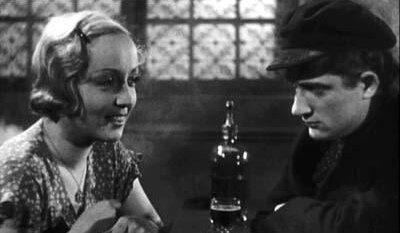|
|
| Tookey's Review |
|
| Pro Reviews |
|
| Mixed Reviews |
|
| Anti Reviews |
|
| Cast |
|
| |
 |
| |
| Released: |
1934 |
| |
|
| Genre: |
DRAMA
FOREIGN
ROMANCE
|
| |
|
| Origin: |
France |
| |
|
| Length: |
89 |
|
| |
|
| |
|
|
| |
|
|
The callow captain of a barge (Jean Daste, pictured right) and his new wife (Dita Parlo, pictured left), a naive village girl, are passionately in love; but he is so wrapped up in his work that he fails to respond to her dreams of visiting Paris. She abandons ship, and he goes (at one point, literally) in Seine. Finally, with the help of his eccentric, tattooed first mate (Michel Simon) , he wins her back.
|
Reviewed by Chris Tookey
|
Jean Vigo's feature-length debut turned out to be his last film: he died of septicaemia three weeks after the film's release, at the age of only 28. Though usually descibed as a classic, it displeased its original exhibitors and has never been a box office success. The novelettish slightness of the plot is the film's greatest defect; thhere are dull patches; and the two central actors are a shade over-dramatic for modern tastes. However, Michel Simon contributes a splendidly anarchic performance; and, even today, the look of the film has an astonishing freshness and imagination.
Perhaps because of Vigo's early death, film academics have romanticised him, and exaggerated the uniqueness of his talent. The film owes much of its pictorial excellence not to Vigo's direction, but to the camerawork of Boris Kaufman, who went on to win an Oscar 20 years later for another distinguished picture, On The Waterfront.
However, Vigo's talent is not seriously in doubt. The most innovative and influential aspect of Vigo's film is his reconciliation of two apparently incompatible styles: social realism and bawdy comedy on the one hand, surrealism and a dreamlike sensuality on the other. The shot which encapsulates the spirit of the film is one early on when the heroine, as incandescent an an angel in her white wedding-dress, walks along the grimy, grey roof of the barge.
|
|
|
